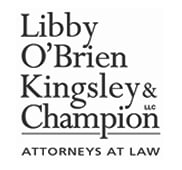With conferences and the NCAA publishing guidance on health and safety considerations on COVID-19 and the gradual resumption of athletic activities, it is important to underscore that each institution has the ultimate responsibility to craft an appropriate health and safety plan based on its individual circumstances. The scope and content of this undertaking is immense and ranges from campus wide decision making and sweeping medical preparations to minute details on the return of student-athletes to campus, practices, and competitions, and ultimately to the structure and protocols for traveling and hosting events. Given the magnitude of the issues associated with this undertaking, only the initial preparations for the return of student-athletes to campus, their participation in voluntary activities, and the resumption of actual practices will be addressed below.
At the outset, a comprehensive written safety and health infectious disease preparedness and response plan should be developed. Such a comprehensive undertaking will likely incorporate guidance from the Centers for Disease Control, the Occupational Safety and Health Administration (OSHA), the NCAA, conferences, as well as the athletic department and the institution’s medical staffs and safety personnel. Because this is not the usual business of athletics administrators, the involvement and support of the institution will be essential. Indeed, because of the extent of the health and safety risks associated with COVID-19 and the potential adverse impact of an outbreak not just on a team, but on the institution as a whole, campus wide involvement and approval of the plan will be important. Coordination with local health authorities will also be beneficial as the infrastructure for testing, treatment, containment, and other response efforts are inventoried, evaluated and assessed.
As part of the plan, protocols need to be developed for the baseline testing of returning student-athletes for COVID-19, and potentially for its antibodies, in addition to the traditional pre-participation medical examinations. A plan then needs to be crafted for the frequency of periodic testing thereafter. Of course, the accuracy, sufficiency of supply, and turnaround time of such testing are essential components that need to be researched and promptly coordinated. Intertwined with the medical assessments will be an evaluation of whether and when high risk student-athletes and staff should return. Like many medical determinations, an individualized medical analysis will likely be necessary.
Consideration needs to be given to the housing that is provided at least initially to limit the level of student-athlete interaction with others. Although player containment efforts can be very effective to limit the possibility of future exposure, the student-athletes will need to be educated on their role and responsibility to their teammates and staff. Training sessions on what they do and where they go outside of their athletic activities, with an emphasis on hygiene and exposure limitation and containment practices, particularly as the student body, faculty and staff return to campus will be helpful. The required use of masks may obviously become common place in athletics.
The introduction and use of cohorts limited in size for strength and conditioning and other activities is an interim measure designed to limit the spread of the disease in the event of an exposure as the teams gradually reassemble can be part of the plan. Reimagining how workouts, practices, meetings, athletic training services, locker rooms, facility access, and even meals are designed, structured, and conducted will likely require innovation and creativity in a manner that is consistent with this objective.
The development of safety, health, hygiene, and sanitary practices may be among the most challenging to plan and implement. The financial requirements, staff resources, and inventory of supplies and equipment for these efforts should not be underestimated. Given the magnitude of these obligations, additional institutional support and/or budgetary reallocations within the department may be required. Illustrative of these new obligations, just the regular recurring disinfection of the numerous contact points and surfaces will quickly become a time-consuming activity in and of itself.
Terms that are frequently used by workplace safety professionals such as engineering controls, administrative controls, and work practice controls, among others, are essentially the framework from which athletic training, practices and competitions will be redesigned in light of COVID-19. To that end, safety professionals on campus and in the community can quickly become invaluable partners to the medical professionals servicing and supporting the athletics department as these new procedures and practices are developed and implemented.
Finally, in the event of exposures and/or positive tests, the plan will need to address response and remediation efforts. From initial containment, isolation and/or quarantine actions, to contact tracing, to the actual treatment protocols and locations, the response will need to be planned as best as possible in advance so that it can be implemented immediately.
While this summary has identified important components of a safety and health plan, there are certainly others that could be included as well. The one thing that everyone has learned throughout the Pandemic is that the health issues and safety precautions associated with the COVID-19 are numerous and dynamic in nature. Ultimately, the situation will remain extremely fluid with scientific developments and the evolution of “best practices” and as a result, athletic departments will continuously need to adapt, update, and revise their health and safety plans.
This article appeared in the June 9, 2020 edition of the LEAD1 Association COVID-19 Report.

